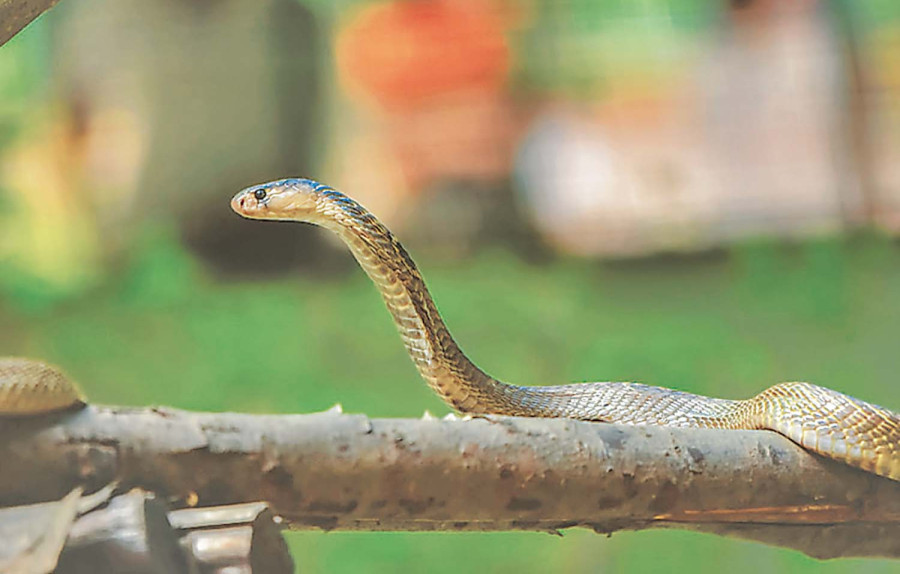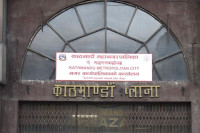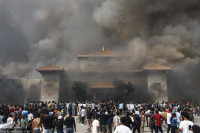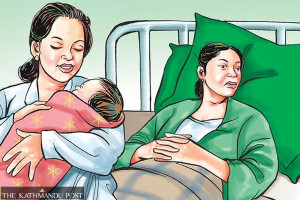Valley
Kathmandu Valley seeing almost a dozen snakebite cases a day
Also, cases of waterborne, foodborne, vectorborne diseases have increased with monsoon.
Post Report
On Sunday, nine snake-bite victims from Kathmandu Valley sought treatment at the emergency department of Sukraraj Tropical and Infectious Disease Hospital.
Doctors at the hospital said that some of the victims were admitted for further treatment as their health condition was serious, while some others returned home after medication.
“Snakebite cases are the top medical issues we have been dealing with for the past several weeks,” said Yuba Nidhi Basaula, director at the hospital. “Snakebite cases surpassed the number of other inpatients admitted for treatment in our hospital.”
Doctors attending to the victims in the hospital said most snakebite victims are farmers, those who work in the fields to cultivate or harvest crops and collect fodder for their cattle. Some children also get bitten while playing in grass and bushes.
“Since January this year, over 350 people from Kathmandu Valley and adjoining districts have been admitted to our hospital,” said Basaula. “Most of the victims were bitten in recent months.”
Snakebites and resulting deaths are common in Nepal during summer.
Each year, around 2,700 people, mostly children and women from Nepal’s Tarai region, die of snake bites, according to a March 2022 report published in The Lancet, a leading international medical journal.
In recent years, highly venomous snakes, generally found in the tropical climate of the Tarai region, have started to appear in hilly and mountainous areas as well.
In the past two months over a dozen venomous snakes were rescued from Kathmandu Valley.
The presence of king cobras and monocled cobras around the Valley, and their nests, shows that highly venomous snakes are starting to slither into hill and mountain areas and adapting and settling there.
Experts say global warming might be behind this phenomenon.
Nepal is one of the countries most vulnerable to the climate crisis and has witnessed extreme weather events over the past decade and a half.
Evidence indicates that the maximum temperature in Nepal is rising at a greater rate (0.05 degrees Celsius per year) than the minimum temperature (0.03 degrees Celsius per year).
Meteorologists said that compared to the districts of the Tarai region, hilly and mountainous districts have been witnessing a faster rise in maximum temperatures.
Public health experts have urged authorities to launch awareness drives about the risks. They say people living in thatched-roof houses are highly vulnerable to snakebites, as snakes visit such homes in search of rats. Also, people should keep their houses and surroundings clean, prevent children from playing in the bush, avoid walking at night, and use torchlights while walking in the dark, according to experts.
Along with the surge in snakebite cases, hospitals in the Kathmandu Valley have reported increases in other seasonal ailments such as diarrhea, fever, and jaundice.
Officials at the Sukraraj Hospital said that 495 people with diarrheal infections have been admitted to the hospital since January.
Doctors anticipate more cases of the ailments in the coming days, as the monsoon activity has just intensified.
The monsoon is considered an epidemic season, when hundreds of thousands of people get infected with waterborne and vectorborne diseases, and snakebites.
Diarrhoeal disease is a common and seasonal public health issue usually triggered by food and water safety or hygiene issues. The disease, which has been associated with higher temperatures, is one of Nepal’s leading causes of illness and death.
“We all know that water supplied in our taps or from other sources is not safe to drink directly,” said Dr Sher Bahadur Pun, chief of the Clinical Research Unit at Sukraraj Hospital. “I request all to ensure that their drinking water is safe, and wash their hands properly before eating.”
Cases of dengue and Covid have also been rising in recent weeks. In the past week alone, 40 people tested positive for Covid.
According to data provided by the Epidemiology and Disease Control Division, at least two people died and 333 others from 39 districts tested positive for the coronavirus since January this year.
The division said that 1,938 people from 73 tested positive for the dengue virus this year.




 17.12°C Kathmandu
17.12°C Kathmandu










